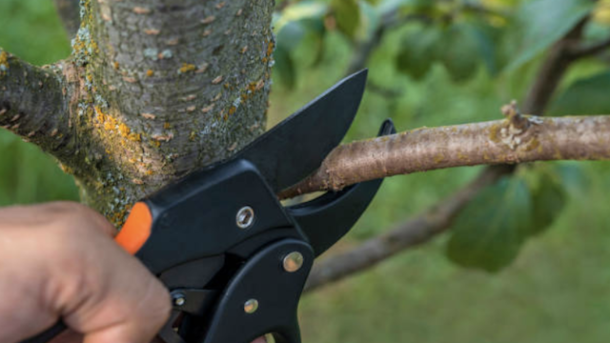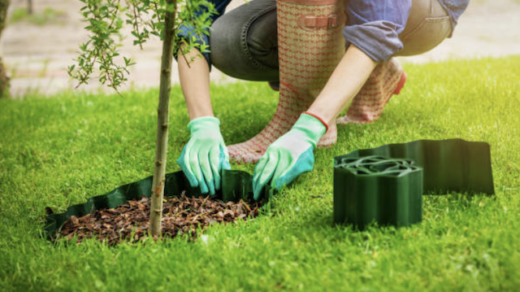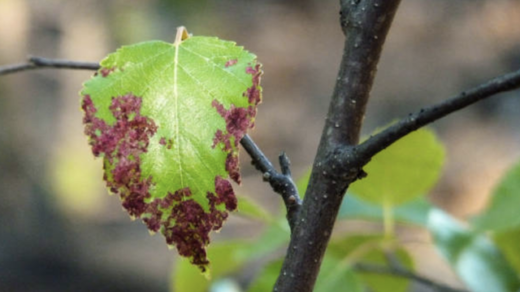Tree pruning in Delaware is an important landscaping service that beautifies and reinforces trees so they can withstand insects, diseases and inclement weather – and look breathtaking doing it!
Pruning needs to be done if you want healthy trees, but it needs to be done carefully by someone who knows what they’re doing. Like a certified arborist from DE Tree Trimming. Homeowners may be able to prune and trim trees safely while they are small, but you also may be doing permanent damage to the tree.
To safely prune trees, you must know all of the following:
- When to prune your species of trees
- How much of the tree should be trimmed at at once
- Where to cut the branches so you do not harm the tree
Removing too much from a tree might kill it or cause structural damage, but minimal trimming done each year benefits trees in several ways. Professional pruning helps to improve the appearance of trees, makes them healthier, removes dead or diseased portions and assists in fruit or flower production.
For the best results, pruning must be performed every year, but as trees mature, you may be able to go two years between major pruning services. Regardless of how often you have your trees trimmed, be sure your arborist is qualified to perform the type of tree pruning your trees need. This won’t be an issue if you call DE Tree Trimming in Delaware!
Types of Tree Pruning Methods
There are 7 different ways to properly trim a tree so that it grows stronger and healthier each year.
Depending on the shape, species and health problems of your trees, one method could be more beneficial than another, but each technique has different benefits.
Crown Thinning Your Trees
Crown thinning is popular for larger, overgrown trees in Delaware. This technique eliminates weak branches within the crown of the tree to allow more light and air flow within the crown. Air flow is especially important for disease prevention.
This tree pruning technique also eliminates branches and limbs that are touching so they do not rub up against each other and snap or cause weaker areas that can be an entry point for insects and pests. Branches that grow at strange angles are usually removed during crown thinning.
Crown Raising Your Trees
This tree pruning technique only removes branches and limbs at the lowest part of the crown so new limbs start higher up on the trunk of the tree. Allowing low branches to get too large makes them hard to cut off, and they can pull nutrients away from the top of the tree, which leads to less fruit and a weak tree.
There are several reasons you may decide to raise the crown of a tree. Many times, it is done to clear the line of sight for automobiles and pedestrians, but it can be done to free up space for landscaping under the tree.
It is a common technique for overgrown trees that are close to homes and buildings.
Crown Reduction
Crown reduction lowers the overall size of the crown from its outer edges. It shortens branches horizontally and vertically to maintain the tree at a certain size. By reducing the crown size, you can remove the need to cut down the tree because it will no longer come into contact with traffic lights, power lines or street lights.
Even when the tree isn’t near structures like these, crown reduction will help the tree look neater because it also removes irregular growth. This is a good solution for trees that are a variety of ages but are supposed to look consistent.
Crown Cleaning
Sometimes referred to as deadwood pruning, crown cleaning is a minimally invasive pruning method that gets rid of dying, snapped or diseased limbs so that the rest of the tree can continue to grow normally. These branches can only create issues over time.
Crown cleaning helps to make the tree look much better, and it prevents branches from rubbing together. Plus it is a safety practice that lowers the chance of falling branches, because healthy branches rarely fall.
Crown Restoration
Crown restoration is a focused trimming technique for trees that have been significantly damaged (either by weather or vandals). It should only be performed by a professional who knows where the tree is going to grow in the future and roughly just how long it’s restoration is going to take.
Unlike other tree pruning services, crown restoration happens over an extended period of time with conservative trimming that reshapes the tree. An arborist will have a definitive plan to restore the tree, but also must be flexible as the tree grows and reshapes on its own, adapting to the tree’s new growth.
Vista Pruning
If you are striving for trees that help improve the overall beauty of your landscaping, you are most likely interested in vista pruning. The purpose of vista pruning is to help to make the tree more aesthetically pleasing from a particular viewing point.
It entails several pruning techniques including crown thinning, crown reduction and crown cleaning – anything that helps the trees look more attractive. Remember, though, that an arborist will never sacrifice the health of a tree, so the focus of vista pruning is still to create strong, healthy trees.
Espalier Pruning
Espaliered trees are pruned heavily to grow flat against a wall or a trellis. It is a unique style of tree pruning that is going to attract a lot of attention to your landscape. Espalier pruning has to begin when the tree is young and then continued very consistently during the tree’s life span.
of espalier pruning include facilitating maximum sunlight to reach the trees, as well as making it exceptionally easier to produce fruit.
Professional Tree Pruning in Delaware
Tree pruning can be harmful to a tree, your lawn, and, of course, for you! DE Tree Trimming highly encourages professional tree pruning over attempting DIY.
Aside from the many possible dangers of tree trimming, you can do a lot of harm to a tree if you don’t know how to prune it properly. Over-pruning is one of the most common errors made by homeowners caring for their own trees.
Trees in Delaware that get annual care from a professional are usually much better off, and hiring an experienced arborist from DE Tree Trimming to trim the trees on your property is a decision you won’t regret. Locate your city in our service area. We work with arborists throughout the entire state of Delaware!





